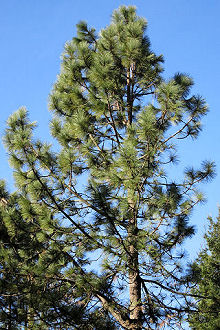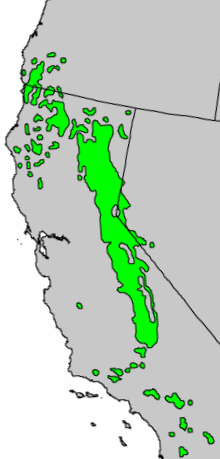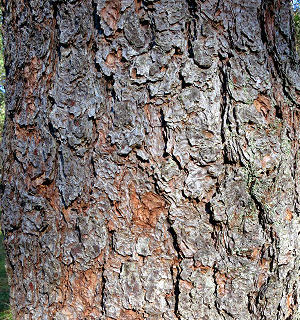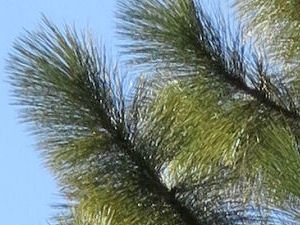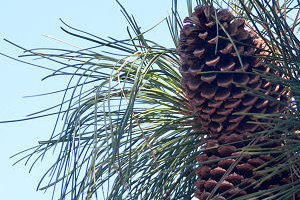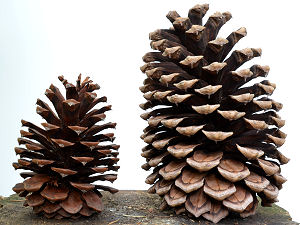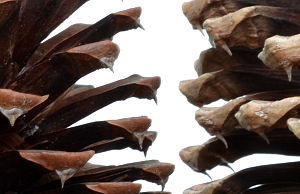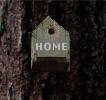 |
Northwest Conifers |
AboutAll ConifersConifersLow-elevationHigh-elevationOthersEast SideSouthwestNon-natives——————Conifer ConesIndexMore Info |
Jeffrey Pine
– Pinus
jeffreyi
|
|
Jeffrey Pine at Hoyt Arboretum
|
Jeffrey pine is similar in appearance to ponderosa pine. It grows to over 130 feet (40 meters), much smaller than the largest ponderosa. Needles: Like ponderosa pine, it has 3 needles per bundle. Jeffrey pine needles typically grow farther along the twig, while ponderosa pine needles tend to be bunched at the end. Cones: The cones are 6 to 10 inches long and have a sharp prickle on each scale. Although Jeffrey cones are often described as less prickly than ponderosa cones, the difference is a subtle one. Cone size is the best way to distinguish Jeffrey pine from ponderosa pine, which has smaller 3 to 6 inch cones. The prickles do tend to point out more on Ponderosa cones, but this doesn't mean you won't feel any pain when you pick up a Jeffrey cone. The Jeffrey prickles are long and narrow compared to those of ponderosa pine. Bark: The bark looks similar to ponderosa pine with flat plates shaped like the pieces of a jigsaw puzzle. But Jeffrey pine bark is brown. The bark is variously described as smelling like vanilla, lemon, or pineapple. Where it grows: Southwest Oregon and throughout the Sierra Nevada of California up to the timberline. Jeffrey pine at Hoyt Arboretum Uses: Similar to ponderosa pine. Names: Named after Scottish botanist John Jeffrey. Other common names: Western yellow pine, bull pine.
|
Ponderosa and Jeffrey cones
Ponderosa and Jeffrey prickles |
© 2012 Ken Denniston

